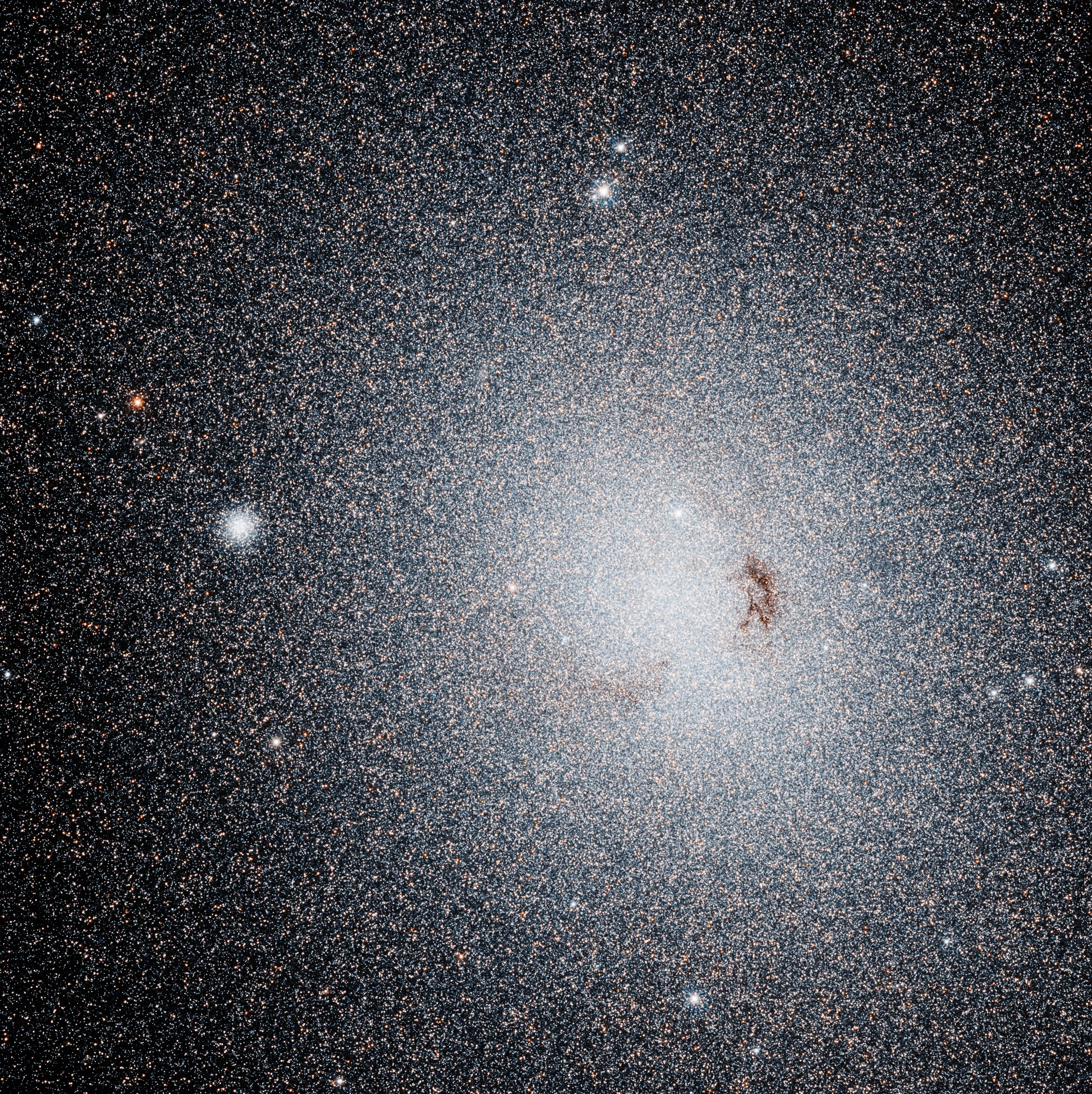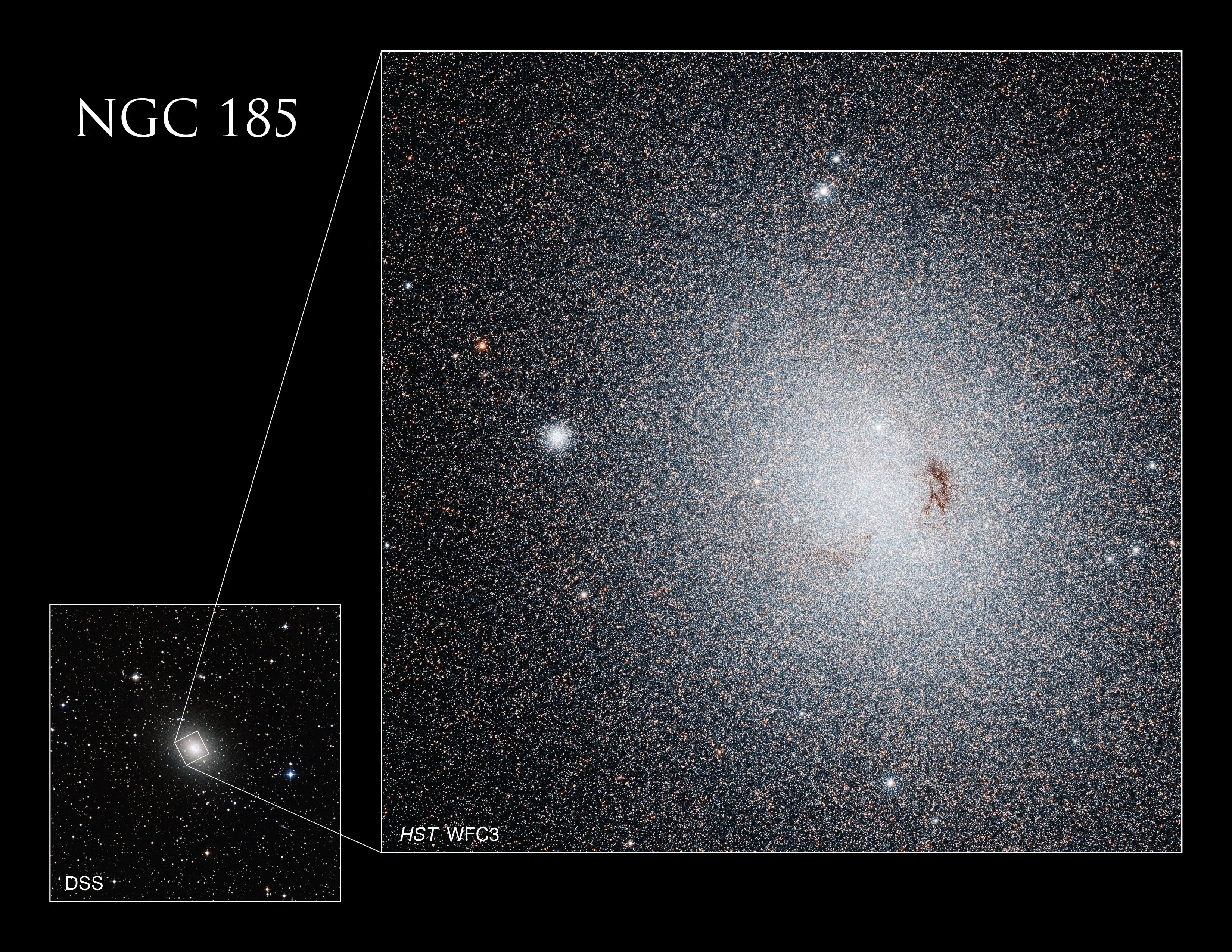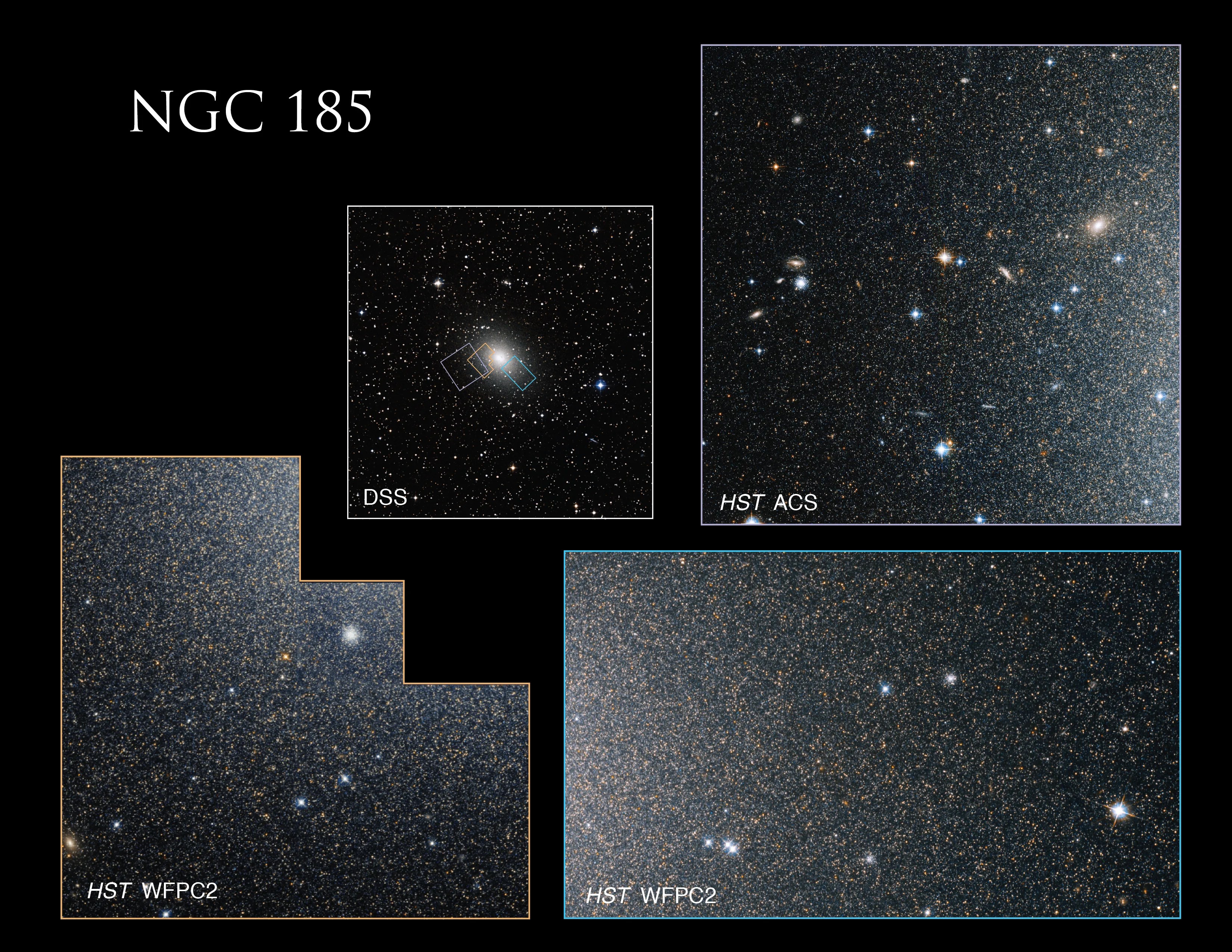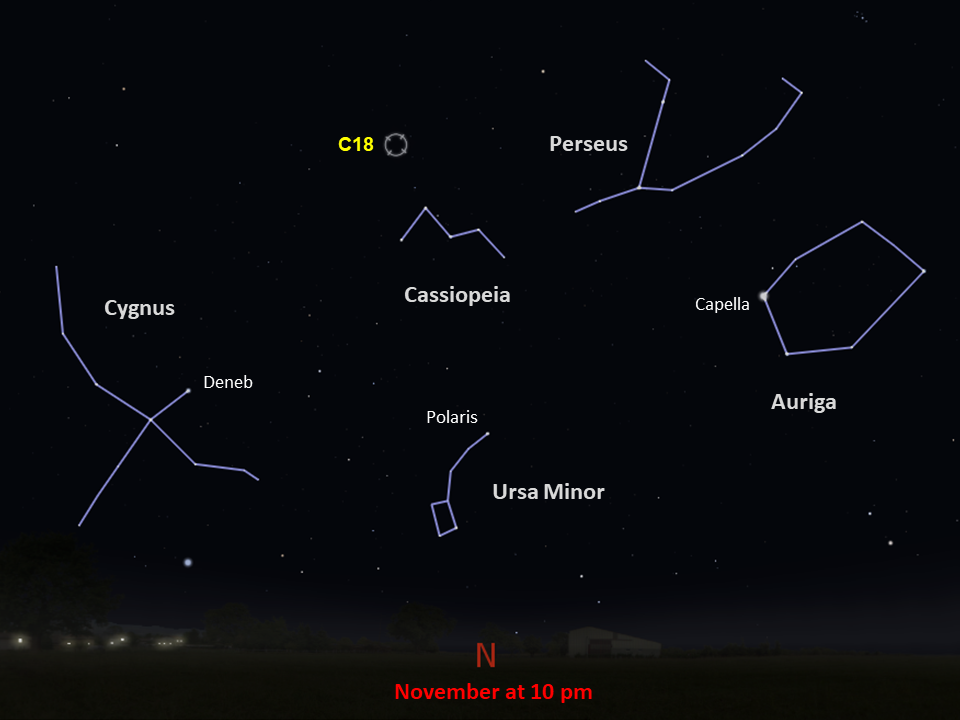Caldwell 18
Caldwell 18 is a nearby galaxy in the local group with an active galactic nucleus.
Distance
2 million light-years
Apparent Magnitude
9.2
constellation
Cassiopeia
object type
Seyfert Galaxy

Located in Cassiopeia, not far from Caldwell 17, Caldwell 18 is a dwarf galaxy and a satellite of the Andromeda galaxy. Also known as NGC 185, it is a member of the Local Group of galaxies. Caldwell 18 is notable for its active galactic nucleus, a region at the center of the galaxy that emits extreme radiation over part of the electromagnetic spectrum.
Some astronomers classify Caldwell 18 as a type II Seyfert galaxy. These types of galaxies appear intensely bright when observed at infrared wavelengths despite their unremarkable brightness in visible wavelengths. Although the classification of Caldwell 18 remains up for debate within the astronomical community, if it is indeed a Seyfert galaxy, then it would be the only one known in the Local Group and the closest one to Earth.
Caldwell 18 was discovered in 1787 by the British astronomer William Herschel (who also discovered the planet Uranus). It is visible from the Northern Hemisphere in the autumn and from northern latitudes of the Southern Hemisphere in the spring. With an apparent magnitude of 9.2, this galaxy can be found with powerful binoculars. Caldwell 18 is easier to spot than the neighboring Caldwell 17, because its center appears more circular and compact than that of its neighbor.
This Hubble image combines observations taken with Hubble’s Wide Field Camera 3 in visible and infrared wavelengths. Clouds of dust appear near the galaxy’s center, and a globular star cluster appears to the left. These Hubble observations helped astronomers study the characteristics of globular clusters in nearby dwarf galaxies.



Glossary
Apparent Magnitude - The brightness of an astronomical object as seen from Earth, influenced by the object's distance from Earth, its absolute magnitude, and even gas and dust that lie between the object and Earth.
Active Galactic Nucleus - A region at the center of a galaxy that is emitting extreme radiation over part of the electromagnetic spectrum, likely as a result of material being pulled into a black hole; the brightest ones are called quasars.
Dwarf Galaxy - A small, faint galaxy with only millions to a few billion stars.
Globular Cluster - A spherical group of stars that are gravitationally bound to each other, with most of the stars concentrated at the cluster’s center.
Satellite Galaxy - A galaxy that is gravitationally bound to a larger galaxy, much like how the planets in our solar system are gravitationally bound to the Sun.
Seyfert Galaxy - A galaxy with an intensely active center that is obscured by gas and dust in visible light and possibly powered by a black hole.
Explore Hubble's Caldwell Catalog
The following pages contain some of Hubble’s best images of Caldwell objects.

Caldwell 1
Also known as NGC 188, this group of stars formed from a large cloud of gas making the stars roughly…

Caldwell 2
This shell of gas is expanding outward, away from the dying star within.

Caldwell 3
This barred spiral galaxy was first spotted by British astronomer William Herschel in April 1793 in the constellation Draco.




